#1 Philips 3200
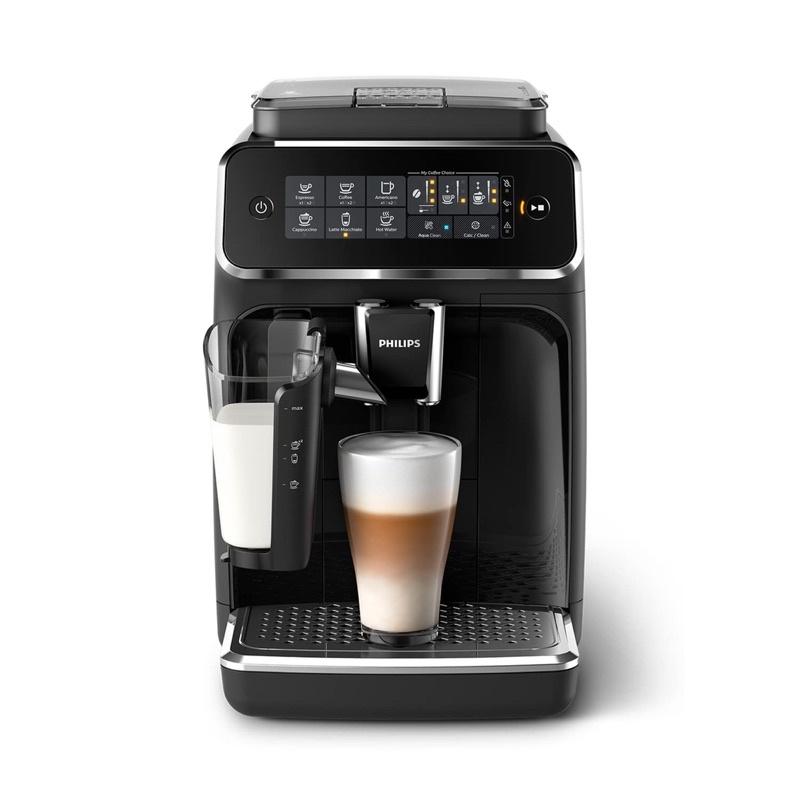
- Easy to use and navigate
- Affordable
- Compact design
#2 Philips 4300
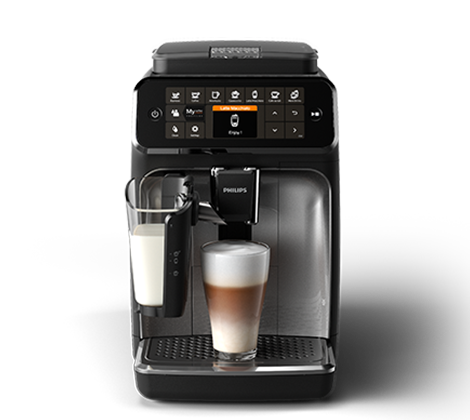
- Wide variety of drinks
- Intuitive touchscreen
- Compact with milk frothe
#3 Philips 5400

- Wide variety of drinks
- Advanced customization
- User profiles
Having owned and used multiple espresso machines over the years, I can confidently say that the journey of finding the right one for my daily coffee fix has been a mix of trial, error, and some exciting discoveries. Recently, I decided to upgrade to a fully automatic espresso machine, and after spending time with the Philips 3200, 4300, and 5400 models, I’ve learned a lot about what makes each of them unique. If you're considering any of these models, here’s a detailed comparison based on my personal experience.
After using each machine for a fair amount of time, I’ve come to appreciate the subtle differences that set these models apart. For those who are new to fully automatic machines, it can be a bit overwhelming to choose between these options. In this article, I’ll take you through the features and performance of the Philips 3200, 4300, and 5400, highlighting what I found useful, and ultimately, which model stood out the most for me.
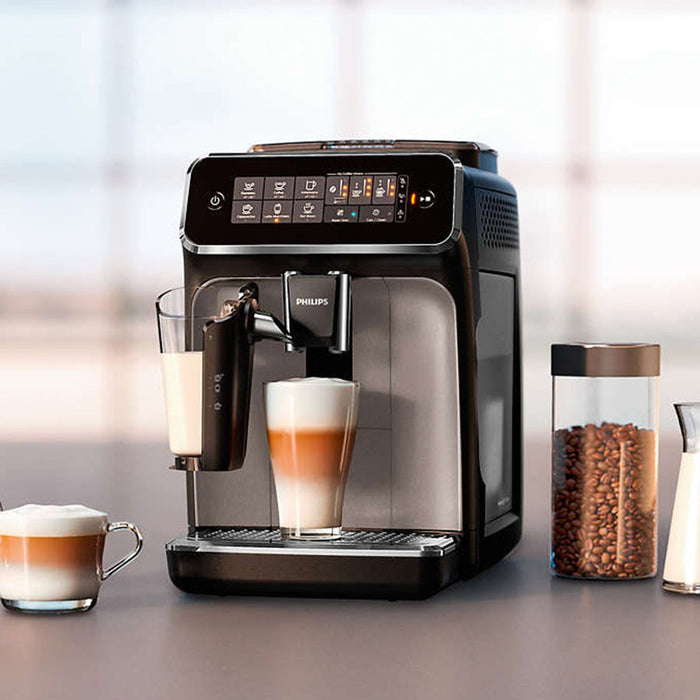
Why I Decided to Choose a Philips Espresso Machine
I first started looking for a new espresso machine, my primary goal was to find something that could make a variety of drinks without being too complicated. I wanted a reliable machine that could make my daily espresso, cappuccino, and latte quickly without too much fuss. After researching various options, I decided on the Philips line-up due to their reputation for creating user-friendly machines that balance quality and affordability. The 3200, 4300, and 5400 models stood out as good contenders, and after testing them, I’ll share why one became my go-to choice.
The Philips 3200: A Solid Introduction to Fully Automatic Espresso
I first used the Philips 3200, I was impressed with how easy it was to set up. The machine is simple, with a minimalistic interface that didn’t require hours of reading the manual. If you’re someone who just wants a straightforward machine to make a decent cup of coffee without too many bells and whistles, this model is a great choice.
What I Liked:
Ease of Use: The touch display is intuitive, and I was able to make my first espresso within minutes of unboxing the machine. The LatteGo milk frothing system is also incredibly easy to clean, which is something I value when I don’t want to spend too much time maintaining the machine.
Simplicity in Customization: There are a few customization options, such as adjusting the coffee strength and quantity. It might not be as in-depth as the higher models, but for someone who likes the simplicity of pressing a button for a drink, this was more than enough.
Quality of Drinks: The coffee produced by the Philips 3200 is quite good, though it doesn’t have the same depth of flavor as higher-end machines. For a basic espresso, it’s perfectly fine, but for specialty drinks like a cappuccino, it falls a bit short in terms of texture and froth quality.
Stepping Up to the Philips 4300: More Variety and Customization
As I used the Philips 3200 for a while, I started to crave more variety. I wanted to be able to choose from a wider range of drinks and have a little more control over how my coffee tasted. This is where the Philips 4300 came in.
What I Liked:
More Beverage Options: With the Philips 4300, I gained access to eight beverages, including options like café au lait and ristretto, which were missing in the 3200. It’s a small change, but having that variety helped me mix things up when I wanted something different.
User Profiles: One feature that I really appreciated was the ability to create two user profiles. Since my partner and I have different coffee preferences, this became a huge time-saver. I could save my preferred settings, and my partner could have theirs, so we didn’t need to adjust the machine every time we made coffee.
Better Customization: The 4300 gave me more control over the coffee strength, milk quantity, and drink size, which made it easier to fine-tune my drinks. The TFT display also made it more fun to navigate through settings, and it was easier to use than the basic touch interface on the 3200.
What Could Be Better:
- Milk Frothing: While the 4300 has a more advanced milk frothing system compared to the 3200, it still doesn’t quite match the level of creaminess and froth quality of a more premium machine. If you're particular about your froth quality, you might notice the difference.
The Philips 5400: My Favorite for Advanced Features and Quality
After using the 3200 and 4300, I decided to take the plunge and upgrade to the Philips 5400, and I have to say, this model completely changed my experience. With its advanced features, more customization options, and premium build quality, it quickly became my favorite of the three.
What I Liked:
12 Beverage Options: The variety of drinks offered by the 5400 is impressive. From a classic espresso to specialty drinks like flat whites and caffé crema, there’s something for everyone. For me, the flat white has become a favorite, and the 5400 consistently produces a smooth, creamy cup.
Advanced Customization: The five aroma strength settings and adjustable coffee and milk lengths are fantastic. I love being able to fine-tune my coffee, and the extra shot function is a nice touch for when I’m craving something stronger. It’s the kind of control that really elevates the overall experience.
Multiple User Profiles: As someone who shares their coffee machine with others, the ability to create up to four user profiles was a game-changer. Everyone in my household can now enjoy their own personalized settings, which adds a lot of convenience.
Premium Build and Design: The 5400 has a sleek, chromed front finish that looks much more sophisticated compared to the other models. It fits perfectly in my kitchen, and I really enjoy the aesthetics of the machine, especially the large, easy-to-read TFT display.
Comparing the Ease of Use Across the Three Models
it comes to ease of use, I have to admit that the Philips 3200 and 4300 are more straightforward. The 3200 is incredibly simple—great for someone who just wants to get their coffee and go. The 4300 steps it up with a more interactive interface and added features, but it’s still easy enough to operate without much learning curve.
The Philips 5400, on the other hand, has a slightly more complex interface due to its many options. However, after using it for a while, I found that it’s still very user-friendly. The TFT display makes navigating through the settings intuitive, and the user profiles feature adds an element of personalization that makes the machine even easier to use in a multi-user household.
Cleaning and Maintenance: What to Expect from Each Model
One of my primary concerns with automatic espresso machines is the maintenance. I’m not a fan of machines that require extensive cleaning, especially when they’re used daily. I was happy to find that all three Philips models—3200, 4300, and 5400—offer easy-to-clean components.
Philips 3200: The LatteGo milk system is very easy to clean, which was a big plus for me. I appreciated how simple it was to remove and rinse out after each use. The machine’s other components, such as the brew group, are also straightforward to clean.
Philips 4300 and 5400: Both of these models feature the same easy-to-maintain milk frothing system as the 3200. In addition, the 5400 has a built-in AquaClean filter, which helps reduce the need for descaling and ensures better-tasting coffee over time.
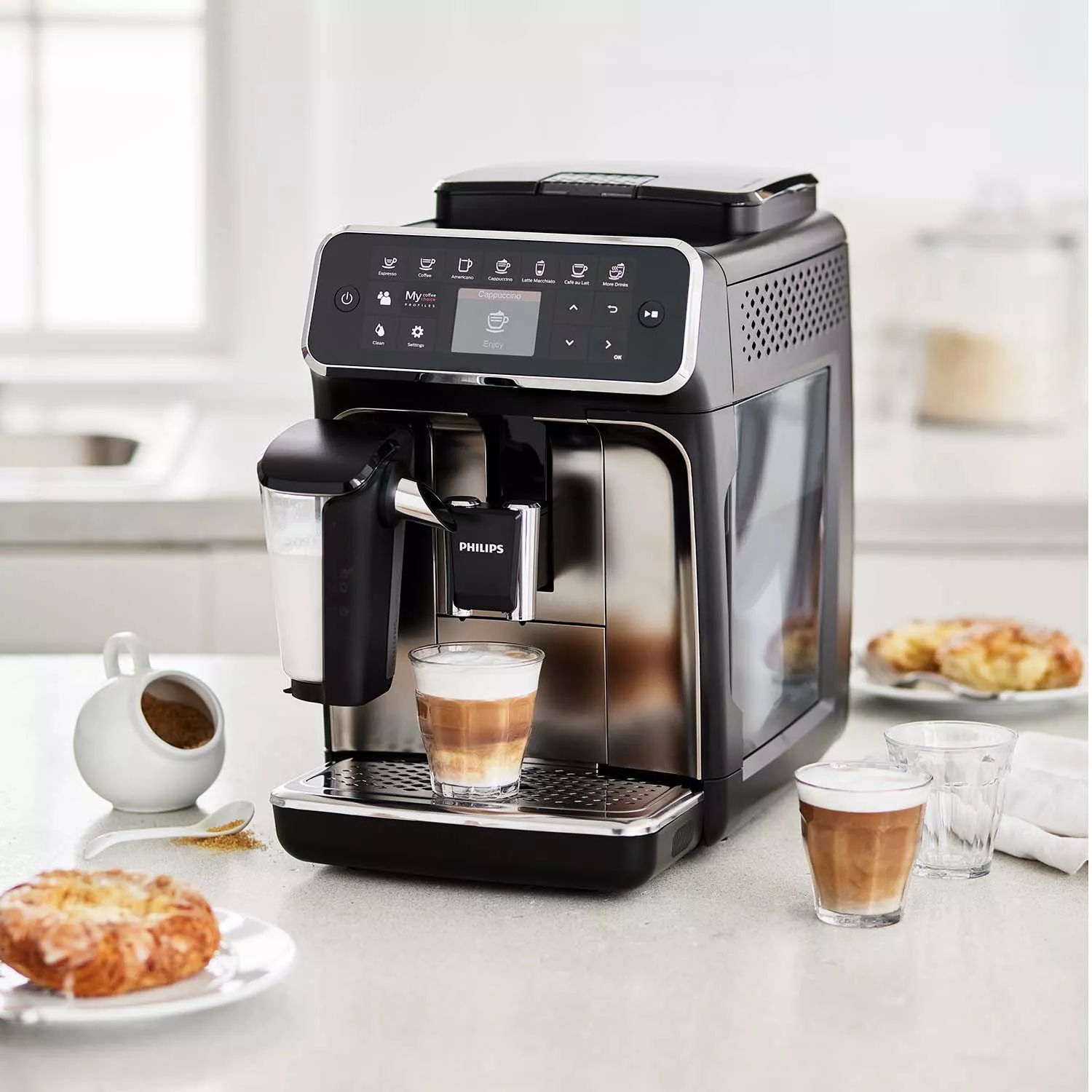
Conclusion: Which Philips Model Should You Choose?
All in all, each of these models has its strengths and caters to different needs. The Philips 3200 is ideal for those who are looking for a no-frills espresso machine that delivers a solid cup of coffee. The 4300 steps up the game with more customization and additional beverage options, making it a great choice for those who want more variety without complicating things too much. However, if you’re looking for the best all-around experience with a wide selection of drinks, better customization, and a premium design, the Philips 5400 is the machine I would recommend based on my experience.
It’s easy to see why each model has its fanbase, but for someone who values versatility, quality, and ease of use, the Philips 5400 stood out as the best overall option for my needs. Whether you're a beginner or a coffee connoisseur, these machines are all worthy contenders, but the 5400 delivers a combination of features that made it the clear winner for me.
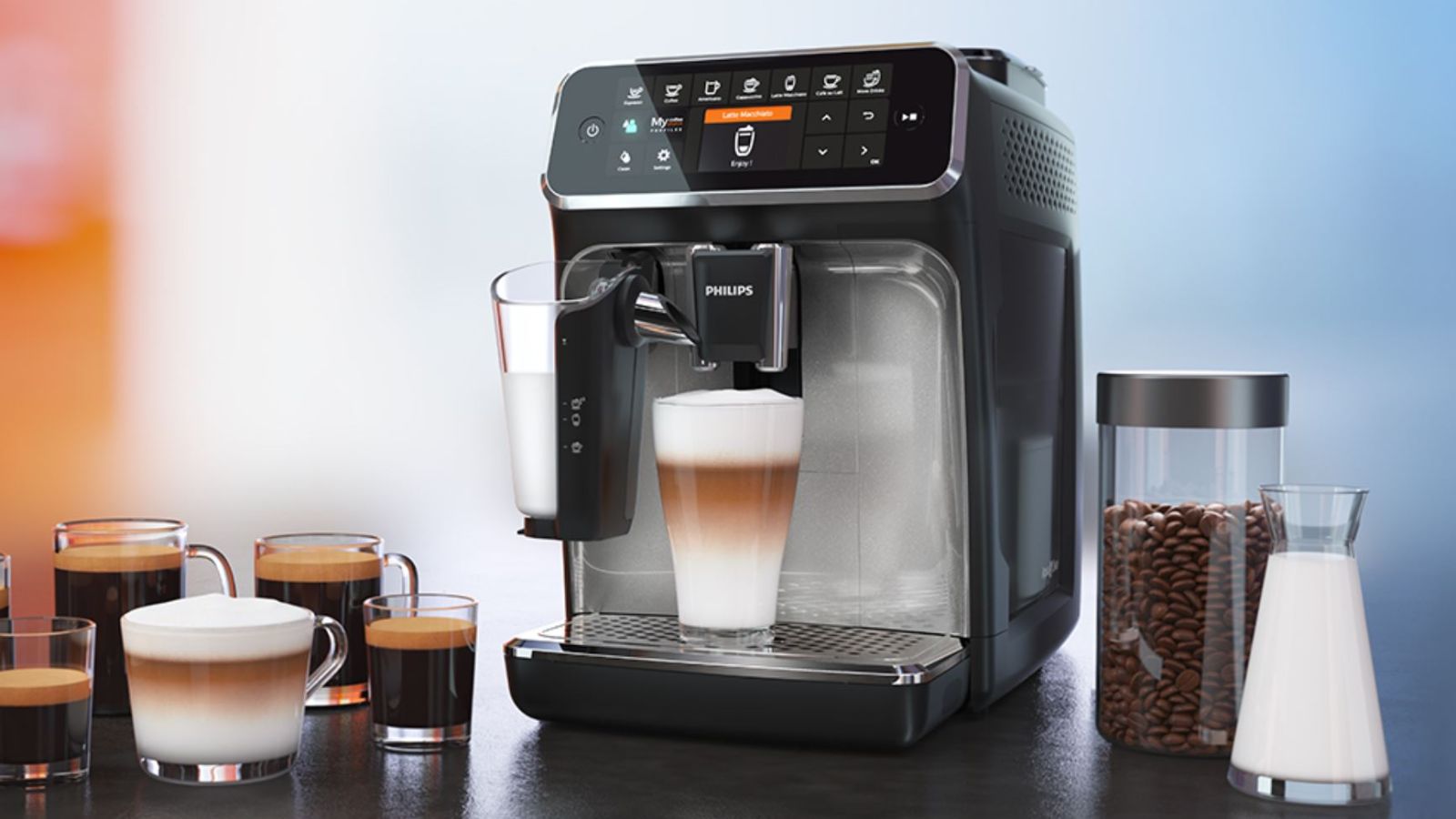
Frequently Asked Questions (FAQs)
Q: What is the difference between the Philips 3200, 4300, and 5400 models?
A: The main differences between the Philips 3200, 4300, and 5400 models lie in the number of beverage options, customization features, and user profiles. The 3200 offers five beverages, basic customization, and no user profiles. The 4300 adds more variety with eight beverages, better customization, and the ability to save two user profiles. The 5400 features 12 beverages, extensive customization options, and up to four user profiles, making it the most advanced of the three.
Q: Which Philips espresso machine is the easiest to use?
A: The Philips 3200 is the easiest to use, especially for beginners. It has a simple interface with a basic touch display and is perfect for those who just want a quick and straightforward coffee-making experience. It’s less complex than the 4300 and 5400, which offer more options and customization.
Q: Does the Philips 3200 have milk frothing capabilities?
A: Yes, the Philips 3200 comes with the LatteGo milk frothing system, which is easy to use and clean. It provides decent milk froth for drinks like cappuccinos and lattes, though it may not be as creamy or thick as that produced by higher-end machines like the Philips 5400.
Q: How many user profiles can I set up on the Philips 4300 and 5400?
A: The Philips 4300 allows you to set up two user profiles, while the Philips 5400 can accommodate up to four user profiles. This is useful if multiple people in your household have different coffee preferences.
Q: Can I make a flat white with the Philips espresso machines?
A: Yes, you can make a flat white with the Philips 5400, which includes it as one of its 12 one-touch beverages. The 4300 does not have a flat white option, but you can still create similar drinks by customizing the milk frothing settings. The 3200 lacks the flat white option, so it would require manual adjustments.
Q: How difficult is it to clean the Philips espresso machines?
A: Cleaning the Philips 3200, 4300, and 5400 is quite simple. They all have easy-to-remove milk frothing systems (LatteGo), and the brew group can be rinsed under water. The 5400 and 4300 also include AquaClean filters that help reduce the need for frequent descaling, making maintenance more convenient.
Q: Which Philips espresso machine has the best build quality?
A: The Philips 5400 has the best build quality of the three, featuring a premium chromed finish that gives it a more sophisticated look. It also feels sturdier and more durable compared to the more basic construction of the 3200 and 4300 models.
Q: Is the Philips 5400 worth the extra cost compared to the 3200 and 4300?
A: If you're someone who enjoys a wide variety of coffee drinks and values customization options, the Philips 5400 is worth the extra cost. It provides the most beverage choices, advanced customization, and multiple user profiles, making it a great option for coffee enthusiasts or households with diverse preferences. However, if you only need basic functionality, the 3200 or 4300 could be more than enough.
Q: Can the Philips espresso machines make coffee with different strength levels?
A: Yes, all three models—3200, 4300, and 5400—allow you to adjust the strength of your coffee. The 4300 and 5400 offer more options, allowing you to fine-tune your coffee strength, milk froth, and drink size to your exact preferences.
Q: Do the Philips espresso machines work well for making cappuccinos and lattes?
A: Yes, all three Philips machines can make cappuccinos and lattes. The 3200 and 4300 use the LatteGo frothing system, which provides decent froth, though the 5400’s frothing system is more advanced, creating smoother and creamier milk for a more professional-quality cappuccino or latte.
Q: How long does it take for the Philips espresso machines to brew a cup of coffee?
A: All three Philips models brew coffee relatively quickly. On average, it takes about 30-60 seconds to brew a cup of espresso or coffee, depending on your selection. If you choose a drink with milk, like a cappuccino or latte, it will take slightly longer due to the frothing process, but overall, the machines are efficient.
